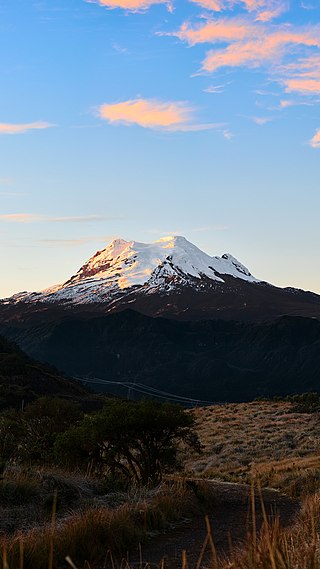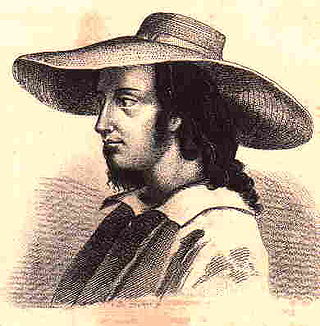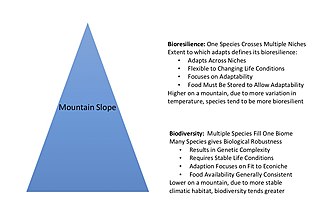
Jean Louis Rodolphe Agassiz FRS (For) FRSE was a Swiss-born American biologist and geologist who is recognized as a scholar of Earth's natural history.

Friedrich Wilhelm Christian Karl Ferdinand von Humboldt was a German philosopher, linguist, government functionary, diplomat, and founder of the Humboldt University of Berlin, which was named after him in 1949.

Sir Joseph Banks, 1st Baronet, was an English naturalist, botanist, and patron of the natural sciences.

Johann George Adam Forster, also known as Georg Forster, was a German geographer, naturalist, ethnologist, travel writer, journalist and revolutionary. At an early age, he accompanied his father, Johann Reinhold Forster, on several scientific expeditions, including James Cook's second voyage to the Pacific. His report of that journey, A Voyage Round the World, contributed significantly to the ethnology of the people of Polynesia and remains a respected work. As a result of the report, Forster, who was admitted to the Royal Society at the early age of twenty-two, came to be considered one of the founders of modern scientific travel literature.

Friedrich Wilhelm Heinrich Alexander von Humboldt was a German polymath, geographer, naturalist, explorer, and proponent of Romantic philosophy and science. He was the younger brother of the Prussian minister, philosopher, and linguist Wilhelm von Humboldt (1767–1835). Humboldt's quantitative work on botanical geography laid the foundation for the field of biogeography, while his advocacy of long-term systematic geophysical measurement pioneered modern geomagnetic and meteorological monitoring.

Frederic Edwin Church was an American landscape painter born in Hartford, Connecticut. He was a central figure in the Hudson River School of American landscape painters, best known for painting large landscapes, often depicting mountains, waterfalls, and sunsets. Church's paintings put an emphasis on realistic detail, dramatic light, and panoramic views. He debuted some of his major works in single-painting exhibitions to a paying and often enthralled audience in New York City. In his prime, he was one of the most famous painters in the United States.

Adolf Philipp Wilhelm Bastian was a 19th-century polymath best remembered for his contributions to the development of ethnography and the development of anthropology as a discipline. Modern psychology owes him a great debt, because of his theory of the Elementargedanke, which led to Carl Jung's development of the theory of archetypes. His ideas had a formative influence on the "father of American anthropology" Franz Boas, and he also influenced the thought of comparative mythologist Joseph Campbell.

Antisana is a stratovolcano of the northern Andes, in Ecuador. It is the fourth highest volcano in Ecuador, at 5,753 metres (18,875 ft), and is located 50 kilometres (31 mi) SE of the capital city of Quito.

Mauritia flexuosa, known as the moriche palm, ité palm, ita, buriti, muriti, miriti (Brazil), canangucho (Colombia), morete or acho (Ecuador), or aguaje (Peru), is a palm tree. It grows in and near swamps and other wet areas in tropical South America.

Humboldtian science refers to a movement in science in the 19th century closely connected to the work and writings of German scientist, naturalist and explorer Alexander von Humboldt. It maintained a certain ethics of precision and observation, which combined scientific field work with the sensitivity and aesthetic ideals of the age of Romanticism. Like Romanticism in science, it was rather popular in the 19th century. The term was coined by Susan Faye Cannon in 1978. The example of Humboldt's life and his writings allowed him to reach out beyond the academic community with his natural history and address a wider audience with popular science aspects. It has supplanted the older Baconian method, related as well to a single person, Francis Bacon.

Thaddeus Xaverius Peregrinus Haenke was a botanist who participated in the Malaspina Expedition, exploring a significant portion of the Pacific basin including the coasts of North and South America, Australia, the Philippines, New Zealand, and the Marianas. His collections of botanical specimens were the basis for the initial scientific descriptions of many plants in these regions, particularly South America and the Philippines. His extensive botanical work and far-ranging travel have prompted some to liken him to a "Bohemian Humboldt", named after Alexander von Humboldt, who made himself familiar with some of Haenke's findings before embarking on his journey to the Americas in 1799.

A natural landscape is the original landscape that exists before it is acted upon by human culture. The natural landscape and the cultural landscape are separate parts of the landscape. However, in the 21st century, landscapes that are totally untouched by human activity no longer exist, so that reference is sometimes now made to degrees of naturalness within a landscape.

Andrea Wulf is a German-British historian and writer who has written books, newspaper articles and book reviews.

Cosmos: A Sketch of a Physical Description of the Universe is an influential treatise on science and nature written by the German scientist and explorer Alexander von Humboldt. Cosmos began as a lecture series delivered by Humboldt at the University of Berlin, and was published in five volumes between 1845 and 1862. In the first volume of Cosmos, Humboldt paints a general "portrait of nature", describing the physical nature of outer space and the Earth. In the second volume he describes the history of science.

Eduard Ender was an Austrian painter.
Govindasamy Mugesh is an Indian inorganic and physical chemist, a professor and the head of the Mugesh Laboratory attached to the department of Inorganic and Physical Chemistry at the Indian Institute of Science. He is known for his studies on the mechanism of thyroid hormone action and is an elected fellow of the Indian Academy of Sciences, Indian National Science Academy, Royal Society of Chemistry and the National Academy of Sciences, India. The Council of Scientific and Industrial Research, the apex agency of the Government of India for scientific research, awarded him the Shanti Swarup Bhatnagar Prize for Science and Technology, one of the highest Indian science awards, in 2012, for his contributions to chemical sciences. In 2019, he was awarded the Infosys Prize in Physical Sciences for his seminal work in the chemical synthesis of small molecules and nanomaterials for biomedical applications.

Romanticism was an intellectual movement that arose in the late eighteenth century and continued through the nineteenth century. The movement had roots in the arts, literature, and science. Largely conceived as a reaction towards the extreme rationalism of the Enlightenment, it championed expressing emotions through aesthetic and emphasizing the transcendent allure of the natural world.

The Andes of Ecuador is an 1855 oil painting by Frederic Edwin Church, the premier American landscape painter of the time. It is the most significant result of his 1853 trip to South America, where he would travel again in 1857. It is Church's first major painting, his largest work to date, and "an early masterpiece of Luminism", according to the Reynolda House Museum of American Art in Winston-Salem, North Carolina, which holds the painting.

Bioresilience refers to the ability of a whole species or an individual of a species to adapt to change. Initially the term applied to changes in the natural environment, but increasingly it is also used for adaptation to anthropogenically induced change.
Events from the year 1859 in Germany.
















